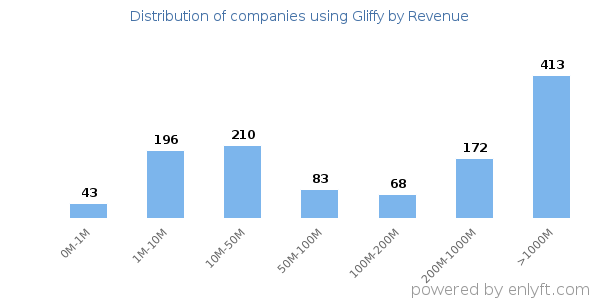Companies using Gliffy
We have data on 1,108 companies that use Gliffy. The companies using Gliffy are most often found in United States and in the Information Technology and Services industry. Gliffy is most often used by companies with >10000 employees and >1000M dollars in revenue. Our data for Gliffy usage goes back as far as 5 years and 1 months.
If you’re interested in the companies that use Gliffy, you may want to check out Google Apps and Microsoft Office 365 as well.
Who uses Gliffy?
| Company | EPAM Systems Inc |
| Website | epam.com |
| Country | United States |
| Revenue | >1000M |
| Company Size | >10000 |
| Company | Globant |
| Website | globant.com |
| Country | Luxembourg |
| Revenue | >1000M |
| Company Size | >10000 |
| Company | Qure4u |
| Website | qure4u.com |
| Country | United States |
| Revenue | 10M-50M |
| Company Size | 50-200 |
| Company | SAP SE |
| Website | sap.com |
| Country | United States |
| Revenue | >1000M |
| Company Size | >10000 |
| Company | Cision |
| Website | cision.com |
| Country | United States |
| Revenue | 200M-1000M |
| Company Size | 1000-5000 |
| Company | Website | Country | Revenue | Company Size |
|---|---|---|---|---|
| EPAM Systems Inc | epam.com | United States | >1000M | >10000 |
| Globant | globant.com | Luxembourg | >1000M | >10000 |
| Qure4u | qure4u.com | United States | 10M-50M | 50-200 |
| SAP SE | sap.com | United States | >1000M | >10000 |
| Cision | cision.com | United States | 200M-1000M | 1000-5000 |
Target Gliffy customers to accomplish your sales and marketing goals.
Gliffy Market Share and Competitors in Office Productivity
We use the best indexing techniques combined with advanced data science to monitor the market share of over 15,000 technology products, including Office Productivity. By scanning billions of public documents, we are able to collect deep insights on every company, with over 100 data fields per company at an average. In the Office Productivity category, Gliffy has a market share of about 0.1%. Other major and competing products in this category include:
Office Productivity
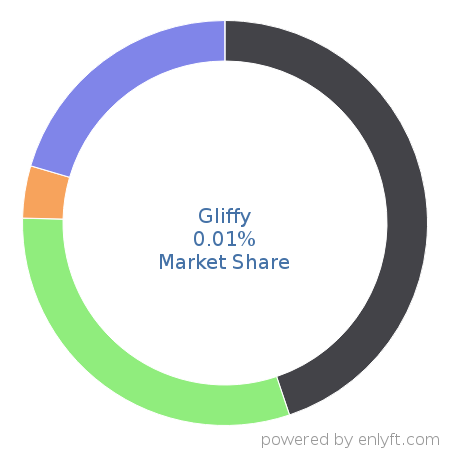

What is Gliffy?
Gliffy is a Diagram Software used to create, share and collaborate UML diagrams, floor plans, Venn diagrams, flowcharts, technical drawings and various other kinds of diagrams in real-time among the team members.
Top Industries that use Gliffy
Looking at Gliffy customers by industry, we find that Information Technology and Services (23%), Computer Software (13%) and Financial Services (9%) are the largest segments.
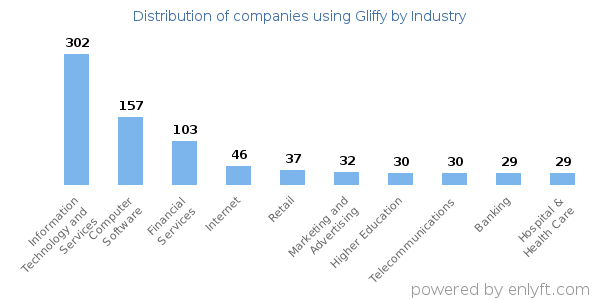
Top Countries that use Gliffy
57% of Gliffy customers are in United States, 9% are in United Kingdom and 6% are in India.
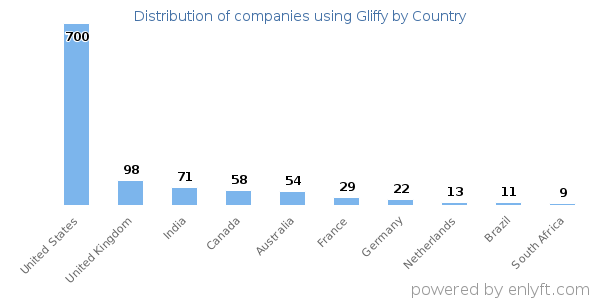
Distribution of companies that use Gliffy based on company size (Employees)
Of all the customers that are using Gliffy, 19% are small (<50 employees), 34% are medium-sized and 47% are large (>1000 employees).
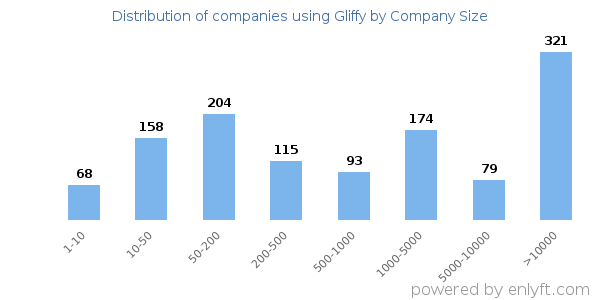
Distribution of companies that use Gliffy based on company size (Revenue)
Of all the customers that are using Gliffy, 34% are small (<$50M), 13% are medium-sized and 48% are large (>$1000M).
